How To Add An Animation To A Rig On Blender
How to rig a face up for animation
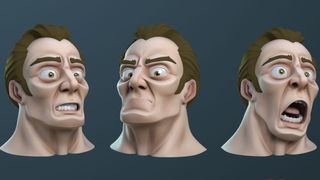
When I was first learning to create character rigs in Maya way back in 2002 while working on the Playstation ii title Superman: Shadow of Apokolips, the rigs we used weren't most efficient, and Set Driven Keys (SDKs) were used for near everything.
The hands were driven by them and so were the facial expressions, in fact almost every command had some sort of SDK involved. Don't get me wrong, the Fix Driven Primal is a powerful tool in Maya, merely you might have to plough through a load of Maya tutorials (opens in new tab) to figure it out. It can be fourth dimension-consuming to gear up up, and is like shooting fish in a barrel to break and a pain to gear up. Plus, your scene size tin end up bloated by animation bend information.
- The best 3D movies of 2018 (opens in new tab)
Over the by few years I have been experimenting with another approach in Maya, merely this time for more than loftier-end rigs every bit opposed to game ones. 1 which is more efficient and in most cases easier and much quicker to implement into a rig. The procedure should give you the basics of rig creation.
In this tutorial, I volition be taking you through the steps of rigging a character's face, but rather than focusing on the more basic areas like joint placement and weight painting, nosotros will be looking at an often overlooked aspect of Maya… the utility nodes.
The give-and-take nodes can seem like an intimidating one and be associated with highly complicated rigs involving locators, splines and other complex systems, but don't worry. With this setup you will be using a combination of blendShapes, joints and nodes to make a highly flexible grapheme capable of a wide range of emotions.
One time y'all accept followed this procedure yous tin then adapt this rig for another grapheme, adding more controls to simplify animation and make it easier to create 3D fine art (opens in new tab). There's besides a video to back-trail this tutorial.
Find all the assets y'all'll need here (opens in new tab).
01. Create mesh topology
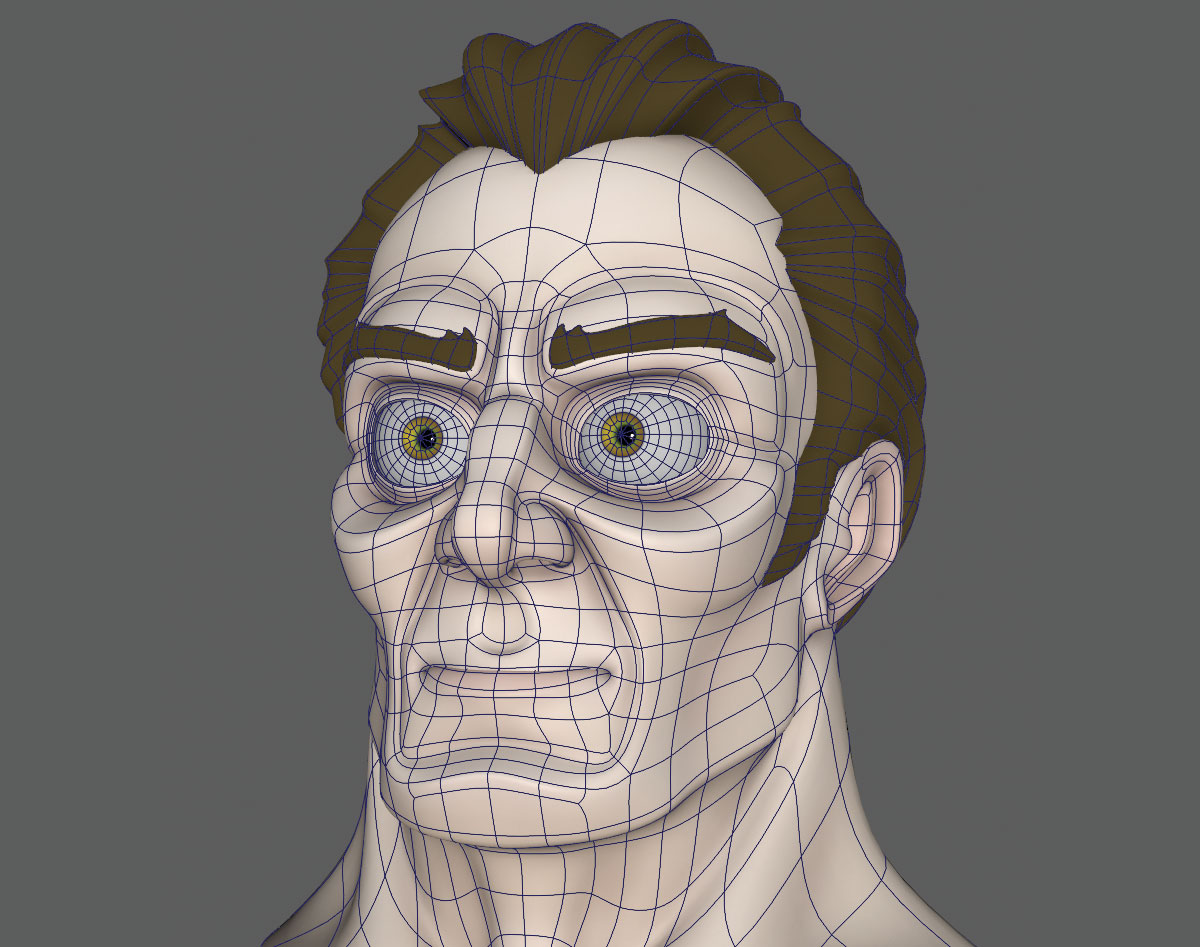
Before you start to build your rig, you need to exercise some investigation work. The model you are rigging and its topology are critical to how well the grapheme will movement, especially if, like in this instance, you lot are focusing on the confront. It'southward important that the topology is not just make clean but that the edge loops follow natural muscle lines. If they do the confront volition deform in a much more than realistic manner.
02. Brand foundation shapes
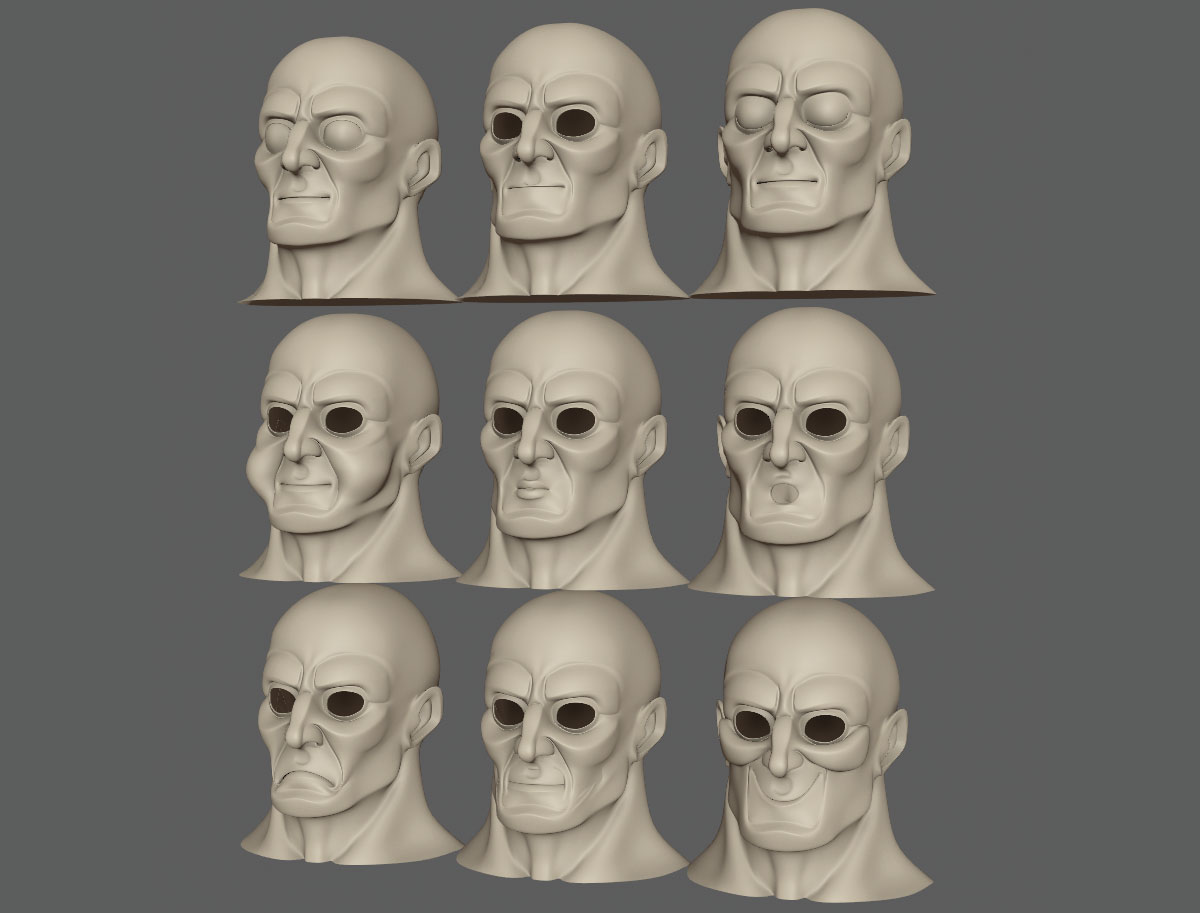
Once you are happy with the topology it's time to get-go creating your kickoff batch of blendShapes and doing this at present will also highlight any trouble areas with the mesh early on. These blendShapes are total facial poses covering all the main expressions needed, only sectioned into central areas like the rima oris and eyes. We are looking for the fundamental shapes here similar a smile, frown and so on, also as the upper and lower eyelids fully closed.
03. Add together more shapes
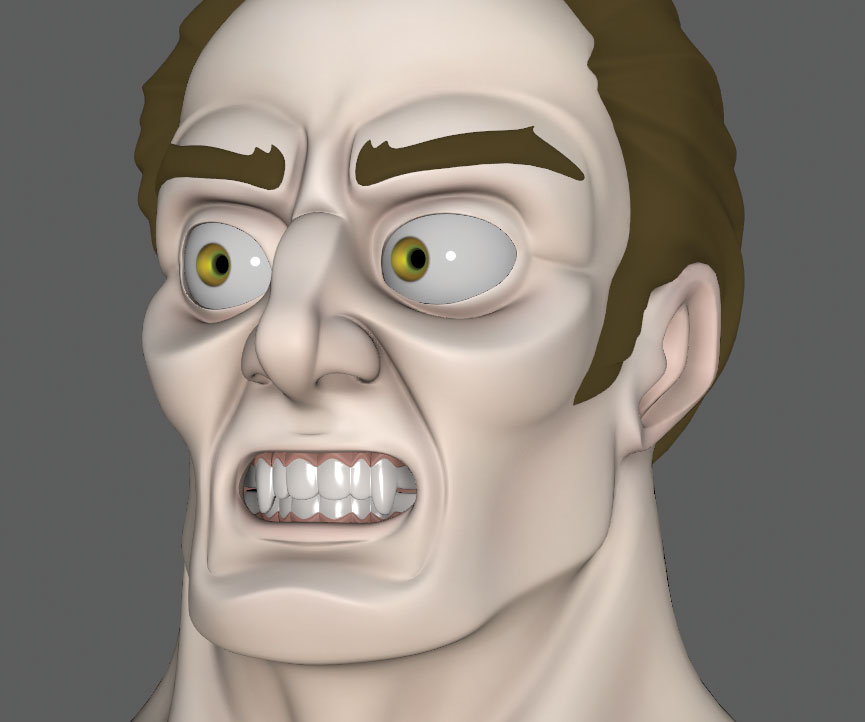
With this rig you are going to rely on 8 primary controls to dispense the lips and then information technology's important to besides add blendShapes for a broad oral fissure every bit well equally a narrow 1 which could also double as the pucker. This is so manipulating a single control can essentially pull around the corner of the mouth to achieve a wide number of expressions and move between all 4 blendShapes at once.
04. Divide the blendShapes
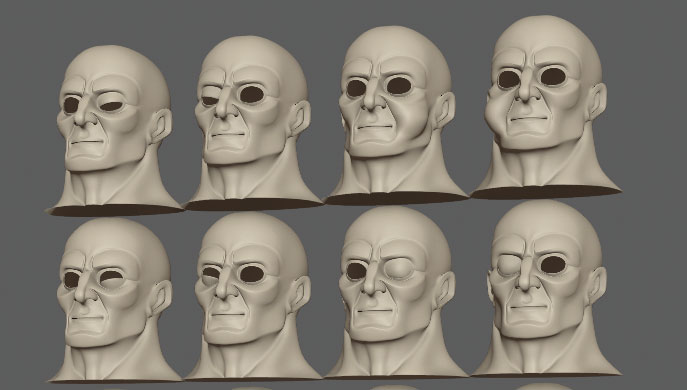
With the master shapes created, information technology'southward fourth dimension to move to phase two. What you need to do next is split them into left and right sides meaning you can pose them independently. A quick way to practise this is to create a blendShape node and then edit its weights, as illustrated in the box on the left. This will limit its influence to simply one side of the model meaning you lot can so duplicate it and continue this copy to create your specific side.
05. Build the skeleton
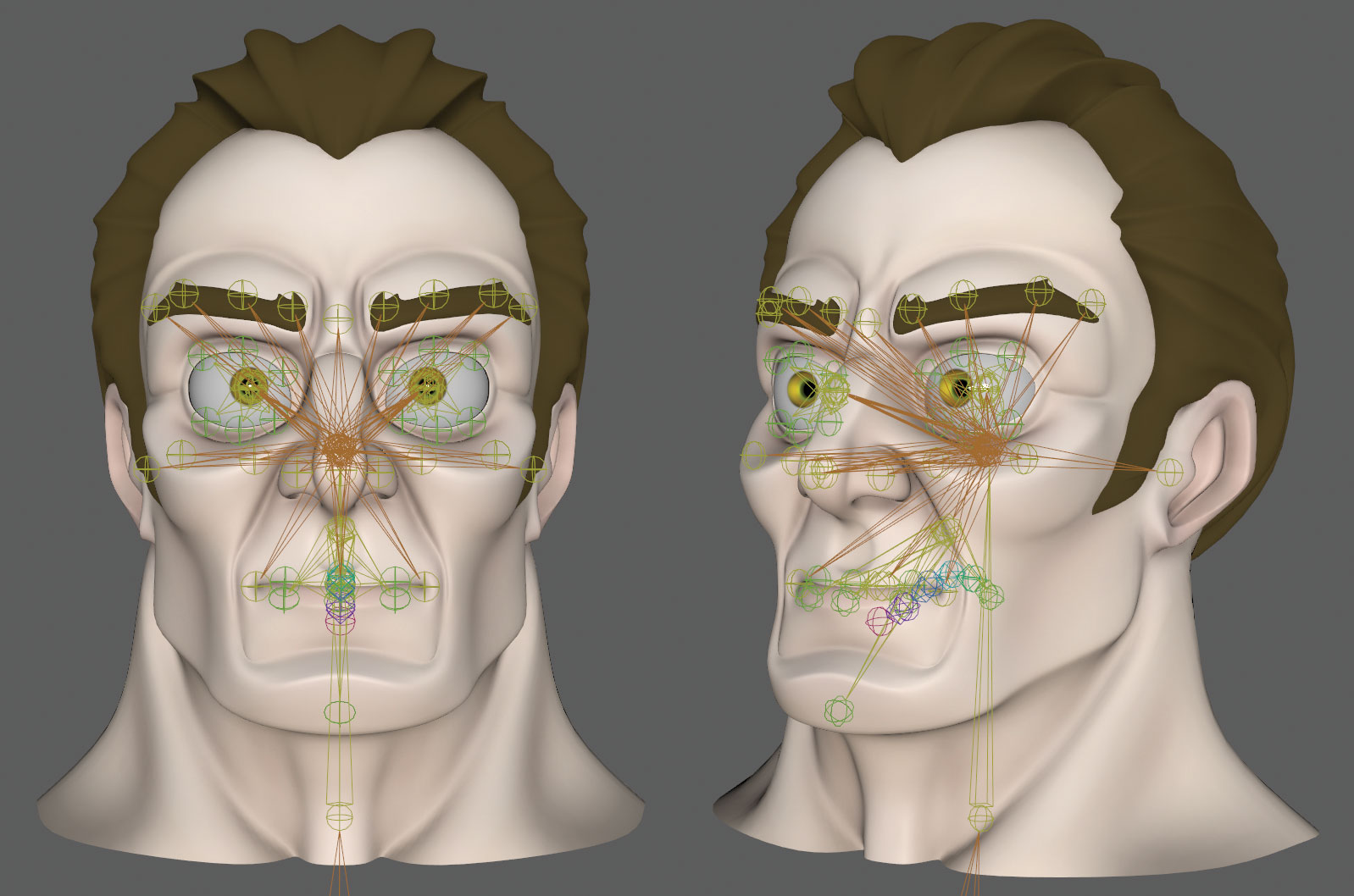
The next phase in the facial rig is to build your skeleton and as mentioned earlier, for this setup we are going to be using both joints and blendShapes to pose the characters features. I similar to use blendShapes as they can give yous more precise shapes, simply and so the joints can assistance to push and pull areas of the face up around to give you more flexibility.
06. Controls or a UI?
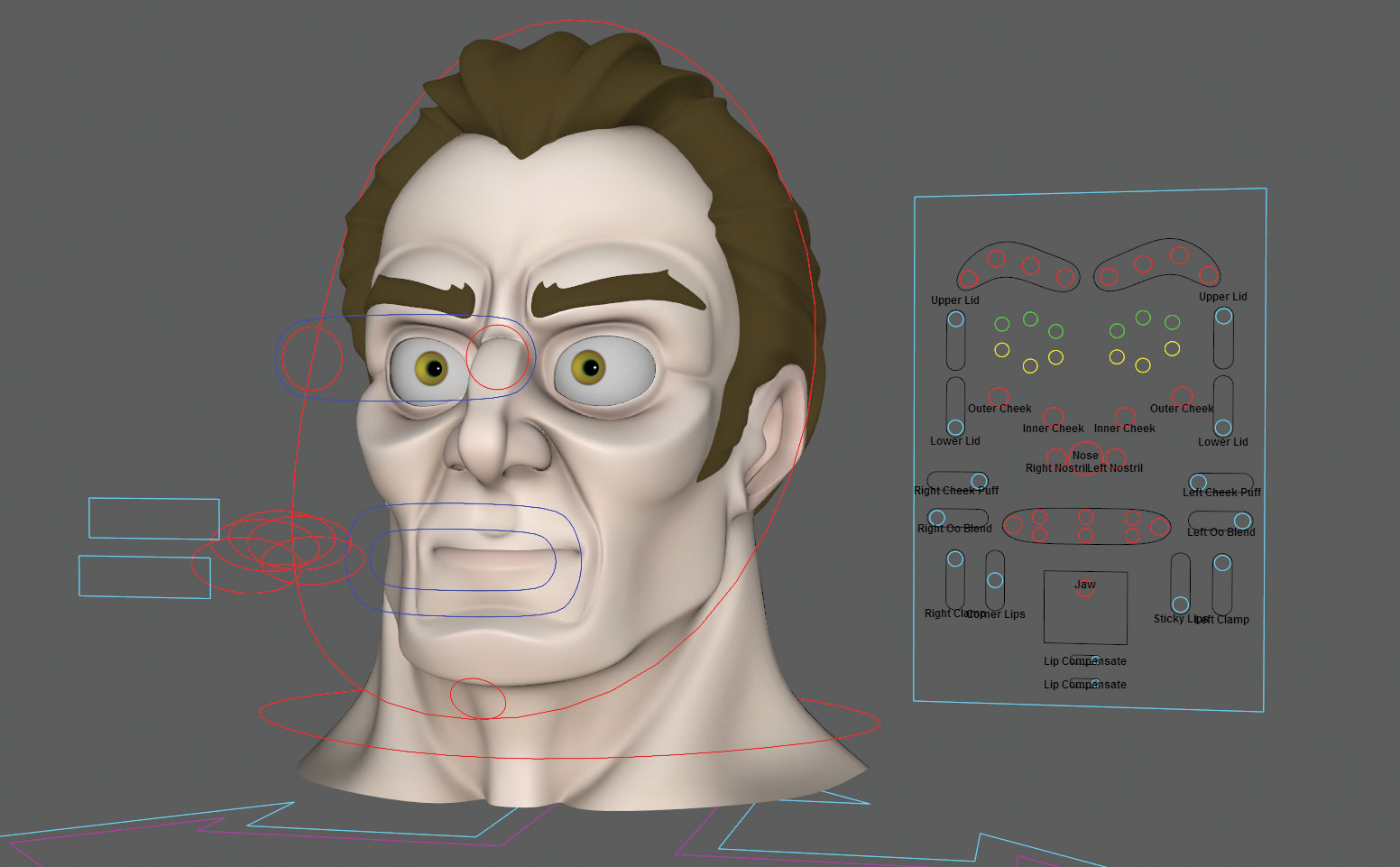
Whether you create controls which float in front of the graphic symbol'south face or use a carve up user interface is upwards to you, or more likely up to the animators who volition exist using your rig. Now it's time to start creating these controls and for this tutorial we volition exist using a combination of the two. A main UI will be used to command the majority of the blendShapes, just a serial of controls will also assist to manipulate the rig in places where it needs to motion in all three axes.
07. Use straight connections
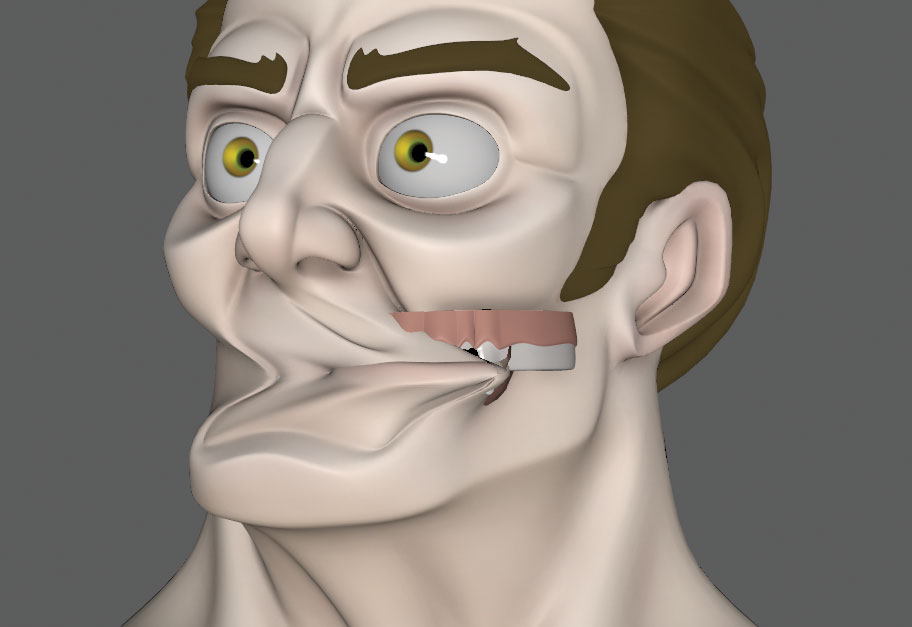
When using a separate UI as we are, you take to arroyo the rig differently. Traditionally y'all could employ Constraints to necktie a specific joint to its master command and in plow this control would naturally follow the head. With a UI, the controls are static and don't follow the caput so using Constraints volition lock the joints to the controls pregnant if y'all move the head the joints stay where they are. A way effectually this is to use direct connections instead of constraints.
08. Driver locators

Simply using straight connections via the Connection Editor volition force the translations, rotations and calibration attributes to match those of the controls. Your joints inherently have translation values applied which will end upwardly changed when connected. Yous could piece of work on an outset organisation or you could create a locator in the place of each joint, freeze its transforms then Parent Constraint the joint to the locator. And so the locator, now with zero attributes, will drive the articulation.
09. Connect the locators
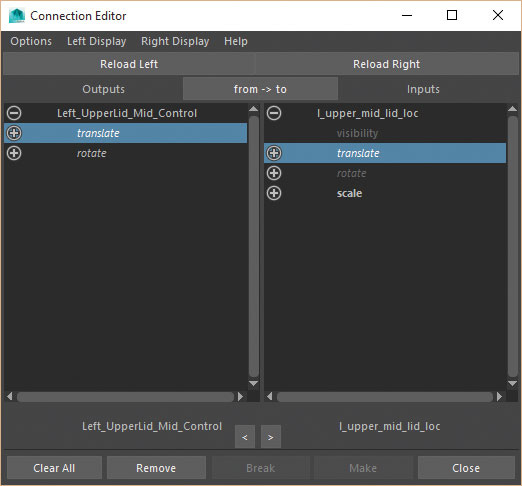
With the locators now in place and the joints parent constrained to them, you can connect the controls from the UI'southward attributes to the locators using the Connexion Editor. If the locators are also parented to the head control they will follow its motility regardless of where the UI controls are. Also, the joints will now motility relative to the head's position and not be locked to the UI meaning y'all can besides place the UI anywhere in the scene.
10. The condition node
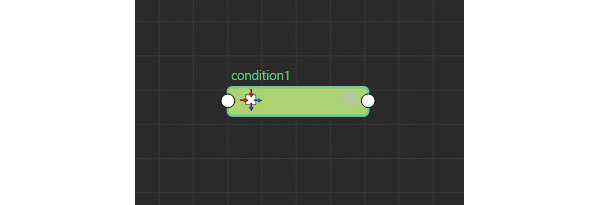
Information technology's fourth dimension to start connecting the blendShapes and introduce the offset utility node, which will be the Status node. This is my favourite utility node and what information technology does is take a value, like the Y translation of a control and, if it goes over or under a specific value information technology outputs some other value. As an example, if the control goes over 0 in the Y translation then we can trigger the grin blendShape, if non, it is ignored. So let's prepare this up.
eleven. Bring everything in
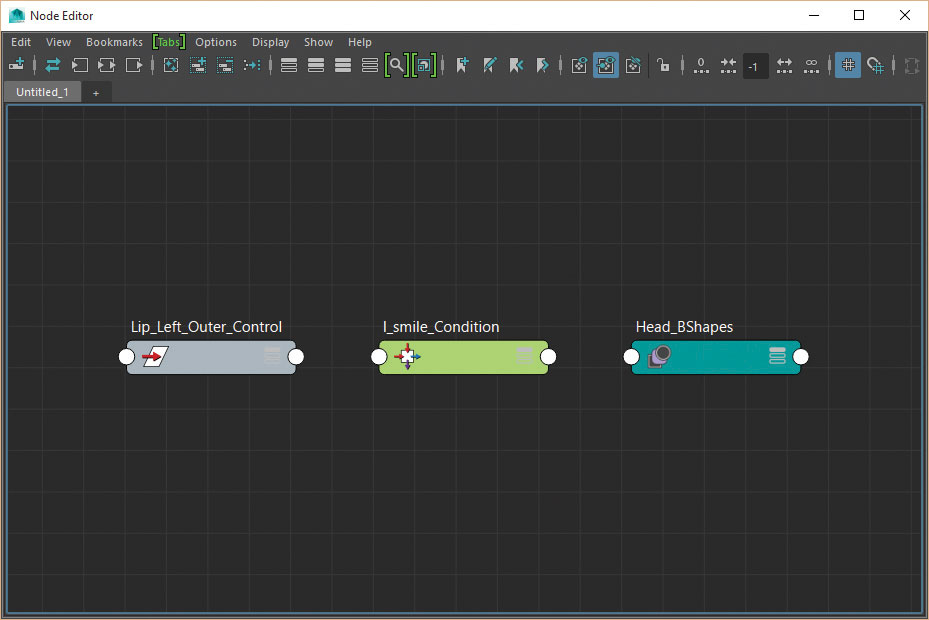
Open the Node Editor and select the Lip_Left_Outer_Control, clicking the Add Selected Nodes to Graph button to bring it in. Now press Tab in the Node Editor and start typing Condition in the pocket-size window and select information technology from the bill of fare beneath to create it. Finally select the chief blendShape node on the graphic symbol's head model, chosen Head_BShapes, and follow the commencement step again to bring it into the Node Editor.
12. Connect the node
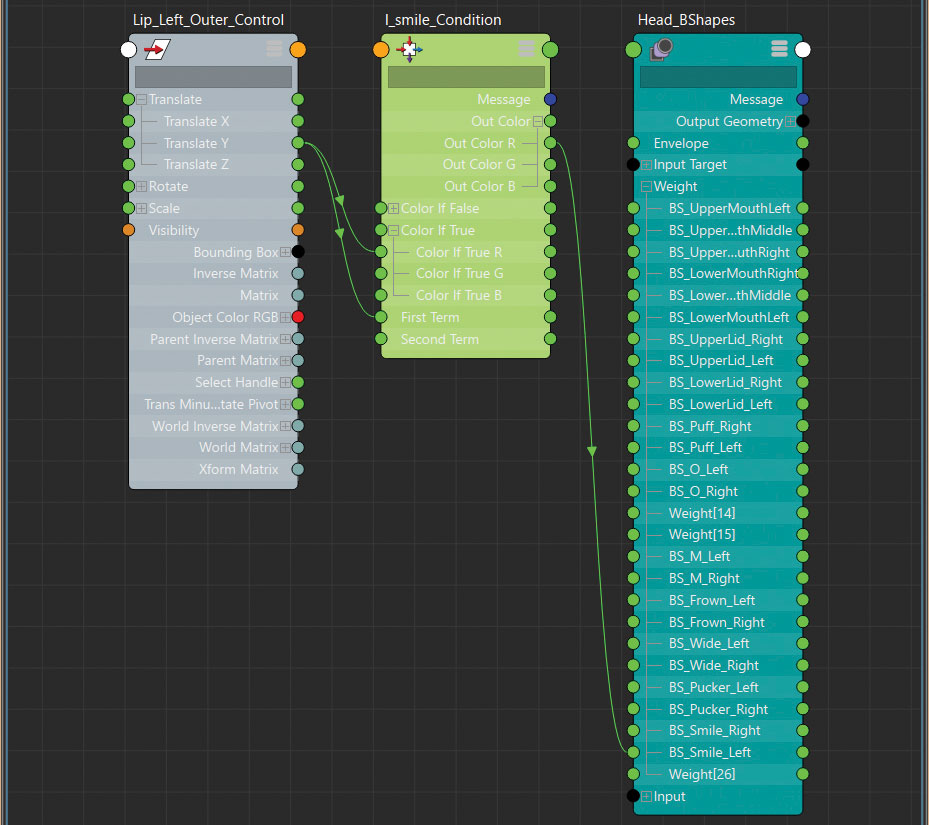
Now connect the Lip_Left_Outer_Control.translateY aspect to the First Term attribute in the Status node.
Leave the 2d Term as 0 and change Performance to Greater Than.
Next connect Lip_Left_Outer_Control.translateY to the ColorIfTrueR. (This ways when the First Term is Greater Than the Second Term information technology will use the true value.)
Connect the OutColorR attribute to the Left Grinning blendShape aspect and move the control to see what happens.
thirteen. MultiplyDivide node
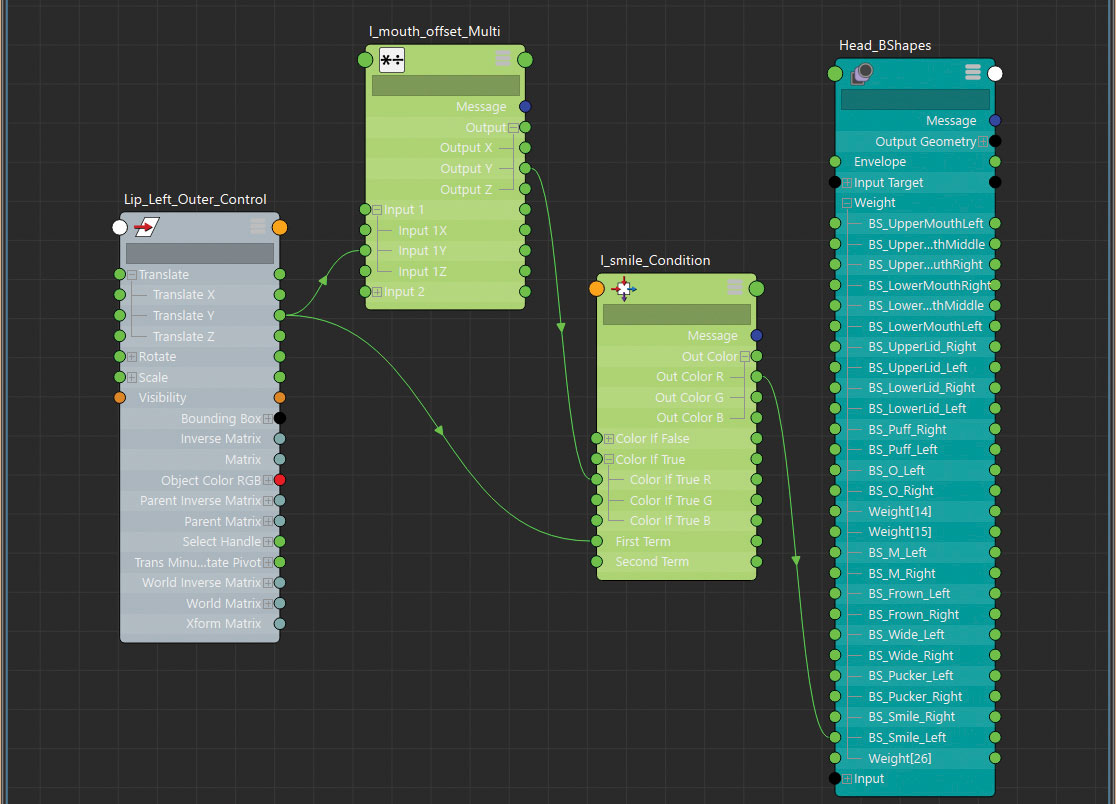
The smiling blendShape is at present triggered only when the control is moved in the Y axis, but it may be influencing it too much. You can use a multiplyDivide node to reduce its influence and slow down the motility. In the Node Editor press Tab and create a multiplyDivide Node.
Connect the Lip_Left_Outer_Control.translateY aspect to the input1Y attribute in the multiplyDivide node and its OutputY attribute to the ColorIfTrueR attribute on the Condition Node.
14. Adjust values
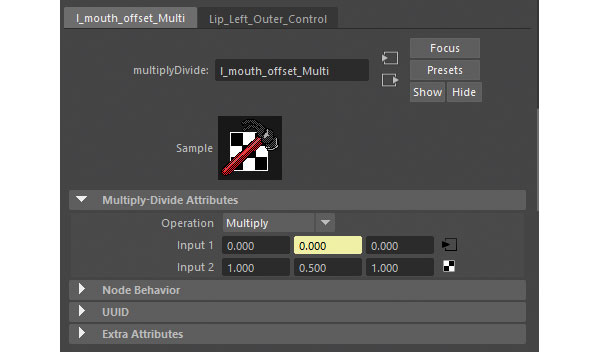
When you move the Lip_Left_Outer_Control, the grinning will look no unlike, that is until you adjust the Input2X attribute in the multiplyDivide node, which is the amount the Input1X value is being divided by. Changing this to 0.5 will halve the amount the blendshape moves considering information technology's halving the Y translation value. As, a value of -0.5 will reverse it and half it, which is important to remember when you connect future controls.
15. Connect more than controls
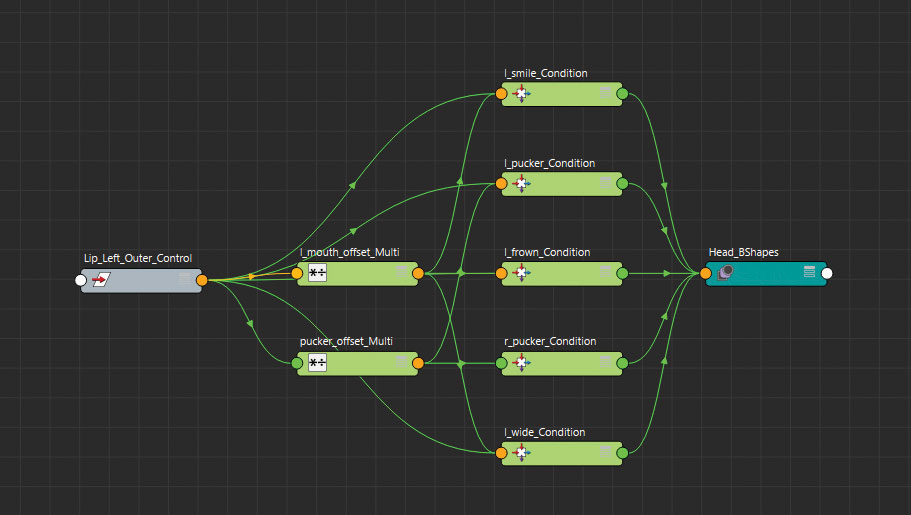
That'south just the smile blendShape added, but you can now follow the same process to make the X translation of the command trigger the wide oral fissure blendShapes. With the opposite directions, so a minus X and Y movement, trigger the pucker and pout shapes, making sure you also alter the Operation in the Status node to Less Than. This volition ensure that those blendShapes are triggered only when the value drops below 0 rather than above.
16. UnitConversion node

You don't always have to create a new node to edit the influence a control has over something. With the jaw movement, rather than utilize a utility node you tin can use a simple, direct connectedness to brand the translations of the control effect the jaw joints' rotations. When connected Maya volition automatically create a unitConversion node past default between the connections which you can apply to your advantage.
17. Slow the jaw
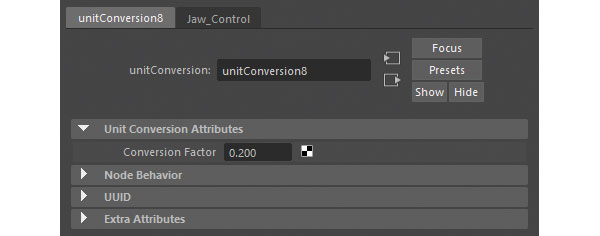
If you find your jaw is rotating as well quickly you can and so edit the Conversion Cistron attribute institute in the unitConversion node, rather than introducing another multiplyDivide node to boring it downward.
18. BlendColors node
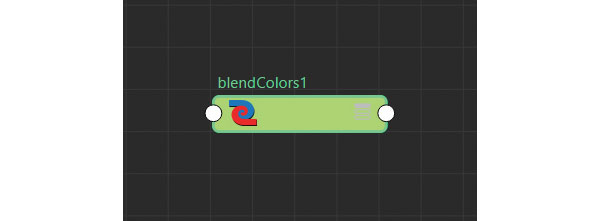
With simply these few nodes you can see how much nosotros take accomplished and from here y'all could happily work your manner around the face and connect up the remaining controls. Nosotros can, however, do more with the assist of the blendColors node. Even though this tin work with your typical RGB values, you tin too employ this node to alloy between two other values or controls, making switching and blending easier.
19. Make pasty lips
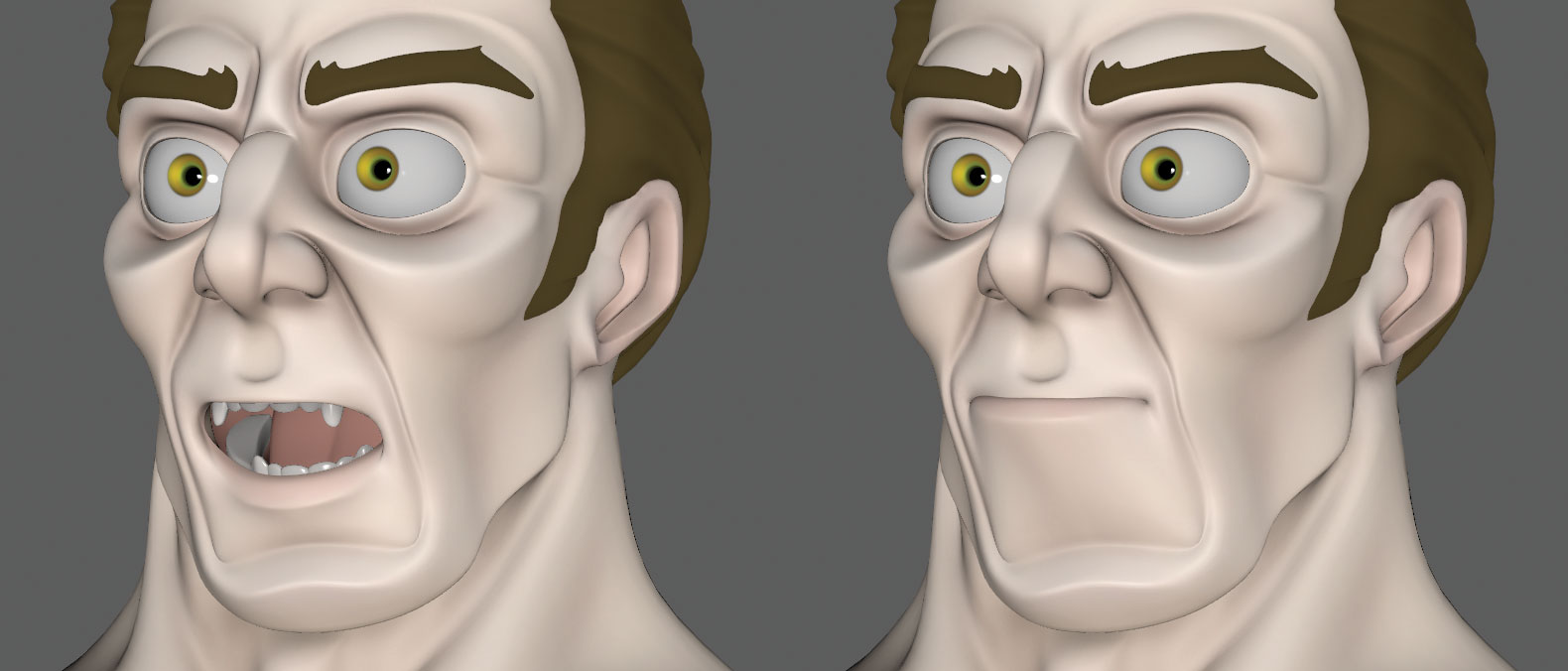
An important part of any mouth rig is for it to have the ability for the lips to stick together, regardless of where the jaw is. Imagine the character needs to chew something, even though the jaw is moving the lips need to remain sealed. To aid achieve this you lot can utilise the blendColors node to dictate whether the lower lip driver locators follow the jaw or the upper lip control.
20. Lip groups
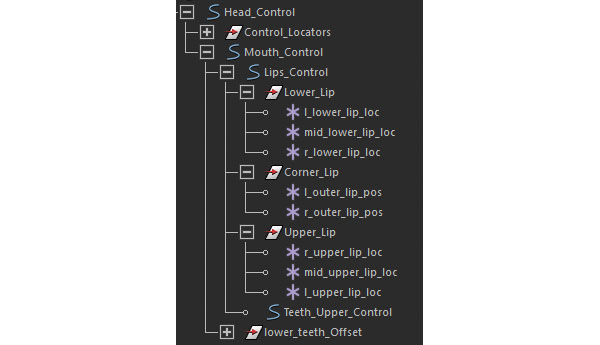
First you need to carve up the lip control locators into 3 groups. Upper_Lip, Lower_Lip and Corner_Lip and brand certain their pivots are in the same place as the jaw articulation. This is then they rotate effectually the same point. Side by side bring the StickyLips_Control, Lips_Control, Lower_Lip group and likewise the Jaw commuter locator into the Node Editor and create a new blendColors node.
21. Connect the lips
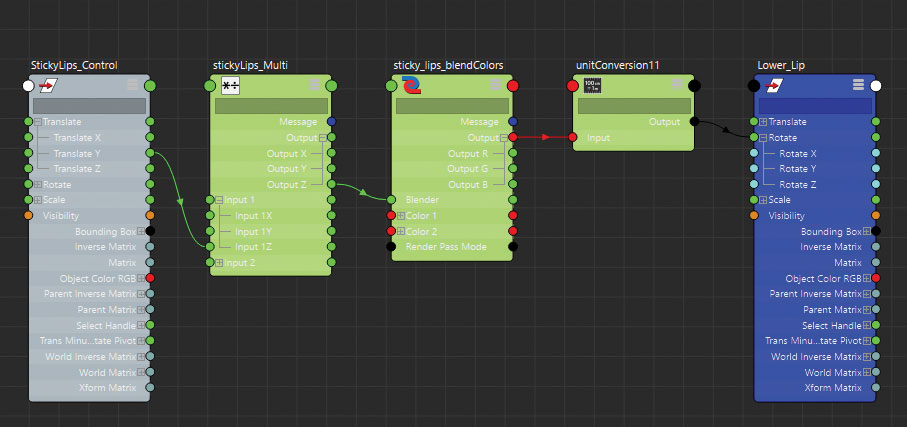
Connect the Lips_Control.rotate attribute to the blendColors.color1 attribute. Repeat with the jaw locator connecting its rotations to the blendColors.color2 attribute.
Connect the blendColors.output into the Lower_Lip grouping's rotation attribute. If you manipulate the Blender aspect on the blendColors node the lower lips volition blend between the two values.
Connect the StickyLips_Control'south Y translation into the Blender attribute so the control drives it.
22. Blink-tween shape

As an extra tip you may observe that due to the linear nature of blendShapes, the eyelids motility through the eyes when activated rather than over them. In this example you may need to create a halfway betoken blendShape for when the optics are partially closed. This can and so be added every bit an in-between target on your blendShape node, which is then triggered up to a specified point earlier the primary shape takes over.
23. Honorable mention
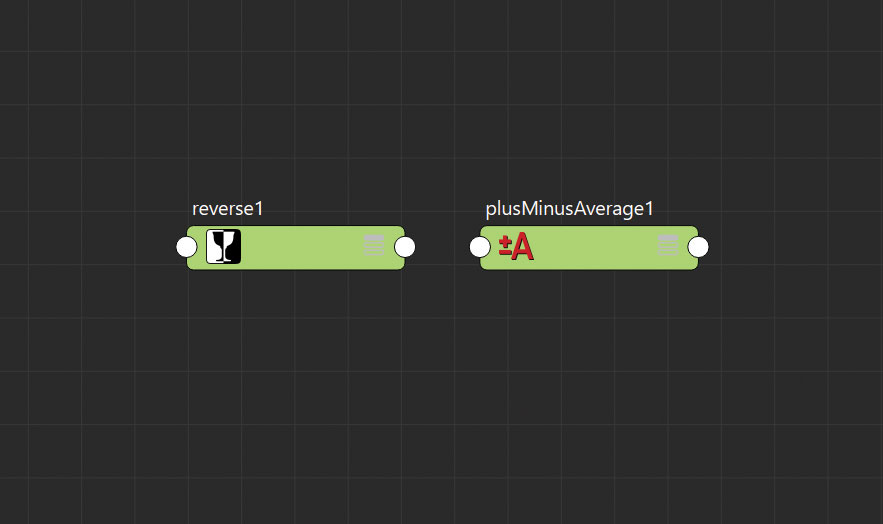
I couldn't end the tutorial without mentioning a couple of other handy utility nodes which take helped me over the years. These are the Reverse and plusMinusAverage nodes. The names are pretty self explanatory with the Reverse node effectively inverting a given value, the plusMinusAverage node is similar to the multiplyDivide node, except it allows you to perform dissimilar mathematical equations.
24. Time to experiment

If you would similar to see more of this rig, download the accompanying video and associated files, and feel free to accept a expect at how the rest of the character has been set upwards.
This commodity originally appeared in 3D Earth (opens in new tab) magazine, the earth's best selling magazine for CG artists. Subscribe hither (opens in new tab) .

Give thanks you for reading v articles this month* Bring together now for unlimited admission
Enjoy your offset month for merely £1 / $one / €1
*Read v free articles per calendar month without a subscription

Bring together now for unlimited access
Try first calendar month for only £1 / $1 / €1
Related manufactures
Source: https://www.creativebloq.com/how-to/how-to-rig-a-face-for-animation
Posted by: leewelesepind.blogspot.com

0 Response to "How To Add An Animation To A Rig On Blender"
Post a Comment